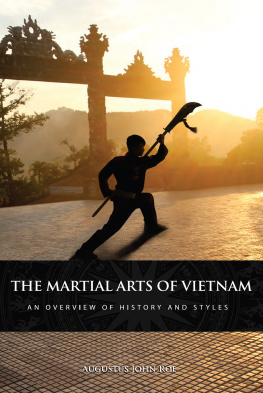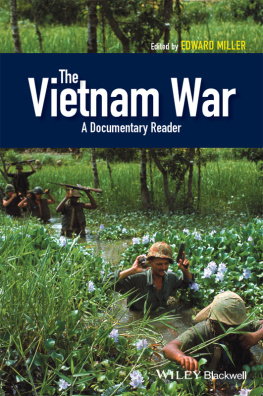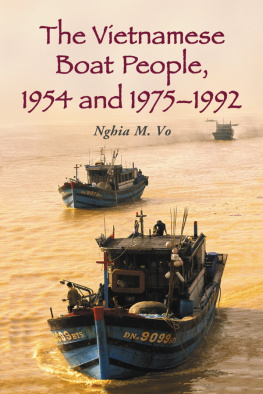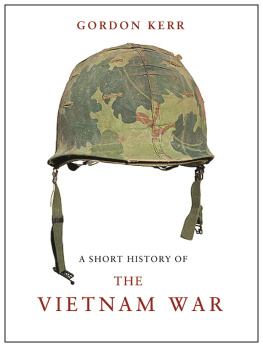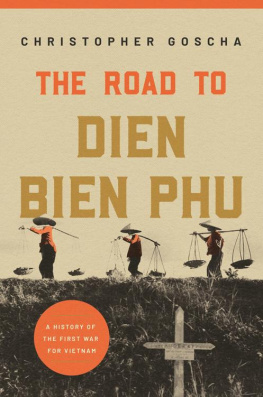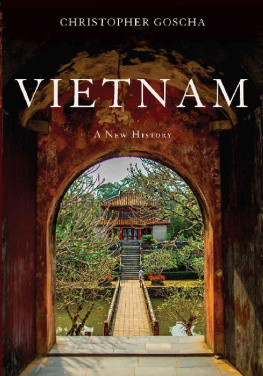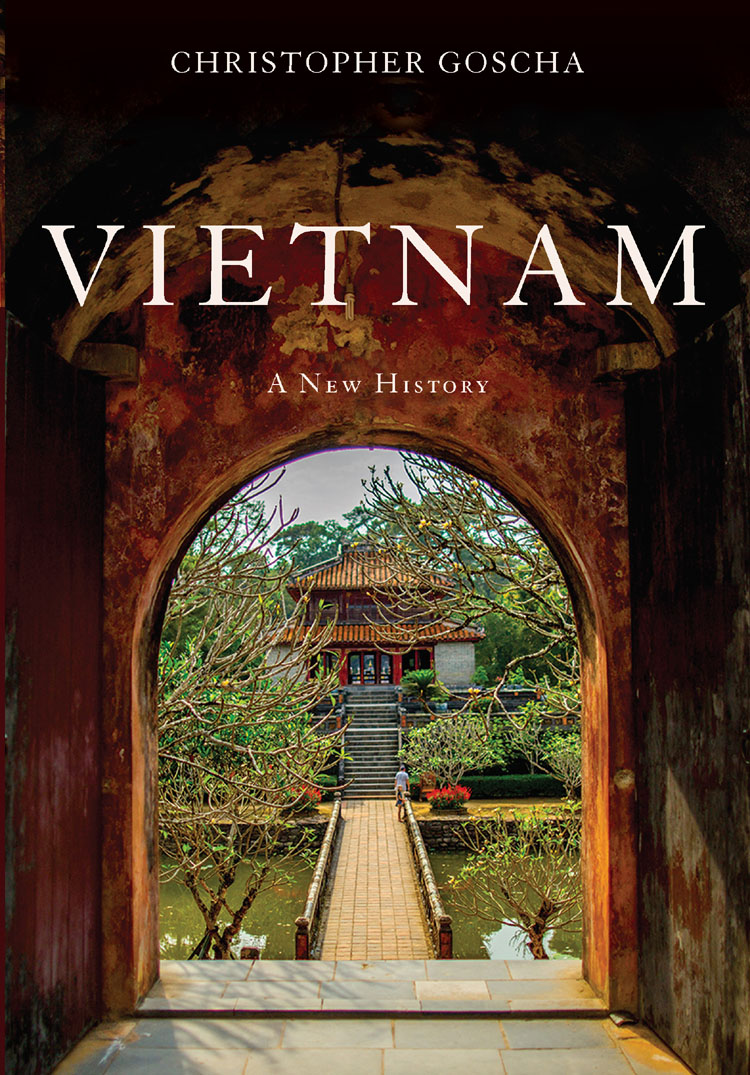Table of Contents
Guide

ARVN: Army of the Republic of Vietnam
ASEAN: Association of South East Asian Nations
ASV: Associated State of Vietnam
BIC: Banque de lIndochine or Bank of Indochina
CCP: Chinese Communist Party
CIA: Central Intelligence Agency
COSVN: Central Office of Southern Viet Nam (the communist partys apparatus in southern Vietnam)
DRV: Democratic Republic of Vietnam
FCP: French Communist Party
FULRO: Front unifi de lutte des races opprimes or United Front for the Struggle of Oppressed Races
GDP: Gross Domestic Product
GMD: Guomindang, or Chinese Nationalist Party
ICP: Indochinese Communist Party
MAAG: Military Assistance Advisory Group
MACV: Military Assistance Command, Vietnam
MEP: Missions trangres de Paris or Paris Overseas Missions
MRP: Mouvement rpublicain populaire or the Popular Republican Movement
NLF: National Liberation Front of South Vietnam (under communist control)
PAVN: Peoples Army of Vietnam (under communist control)
PLAF: Peoples Liberation Armed Force (army under communist control operating below the seventeenth parallel)
PRG: Provisional Revolutionary Government of the Republic of South Vietnam (under communist control)
RV: Republic of Vietnam
SEATO: South East Asia Treaty Organization
SRV: Socialist Republic of Vietnam
SV: State of Vietnam
TLVD: Tu Luc Van Doan or the Self-strengthening Literary Movement
UNHCR: United Nations High Commissioner for Refugees
Viet Minh: short for Viet Nam Doc Lap Dong Minh, or Vietnamese Independence League
VNQDD: Viet Nam Quoc Dan Dang or Vietnamese Nationalist Party
VWP: Vietnamese Workers Party (replaced the ICP in 1951)
Over the last fifty years, a wide range of scholars has produced an exciting body of scholarship on Vietnam. Without access to it, I would have never been able to write this book. In many ways, Im standing on their shoulders and I hope that I have done them justice in the pages that follow. It is impossible to cite each of them here; the list would go on for pages. While they may not always agree with everything I advance, I wish to thank them and those who kindly took the time out of their busy schedules to read and comment on draft chapters, provide references, or make suggestions for improving the book. In no particular order, they are: Agathe Larcher, Nola Cooke, Liam Kelley, Li Tana, Philip Taylor, Kathlene Baldanza, George Dutton, Jon Heit, Mark Lawrence, Keith Taylor, Christopher and Susan Bayly, Shawn McHale, Geoff Wade, Phi Van Nguyen, Franois Guillemot, Sophie Quinn-Judge, Nguyen Quoc Thanh, Tuong Vu, Nasir-Carime Abdoul, Philippe Papin, David Marr, Charles Keith, Peter Zinoman, Olga Dror, Emmanuel Poisson, and William Turley.
ABOUT THE AUTHOR
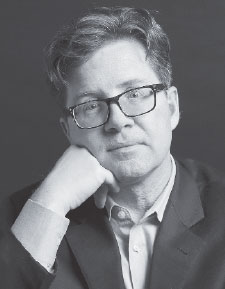
CHRISTOPHER GOSCHA is an associate professor of history at the Universit du Qubec Montral. The author and editor of numerous books on Vietnam, Southeast Asia, and international relations in English and French, he lives in Montreal, Canada. Credit: Studio de Photo Snap, Montral, Canada
I N THE SPRING of 1694, Shilian Dashan, a Buddhist abbot in charge of the Changshou Monastery in the southern Chinese port city of Guangzhou (Canton), received two letters from Vietnamone from a former disciple now serving as the Dai Viet courts advisor on Buddhist matters, the other penned by the ruling lord himself, Nguyen Phuc Chu. Since assuming power a few years earlier, the Vietnamese ruler had been trying to bring this highly regarded missionary to Hue to help spread the Buddhist church. Part of it was personal; Chu wanted to believe. Part of it was also designed to legitimate royal power and reinforce Nguyen state-building in a very contested land. To convince the Chinese master of his sincerity, Nguyen Phuc Chu insisted in his missive: I now devote myself to burning incense and meditation and humbly beg the master of the Way to change his mind and agree to travel. Only then will our kingdom prosper.
It apparently worked, for a year later Dashan and his team of over a hundred people landed in todays central Vietnam. The Chinese monk immediately set to work, performing the rites making Nguyen Phuc Chu his first Vietnamese disciple, before initiating the royal family, court officials, and various elites into Buddhism. Dashan presided over the establishment of new temples and the renovation of others. He advised court officials and the Nguyen lord on Buddhist doctrine and statecraft, essential to helping the Nguyen make a new Vietnam, independent of the one further north from which it had initially sprung.
Dashan could not have sailed back to China in 1696 without realizing that there was not one Dai Viet, but in fact two hiding behind that nameone which had been anchored in the Red River delta for centuries and still was, the other moving its way southward past Hue. Based in Guangzhou and having proselytized extensively in Asia, Dashan would have also known how overland and seaborne routes had long connected both of these Vietnams to China, the South Seas, and the Indian Ocean. Chinese traders and monks had been crisscrossing these areas for centuries, spreading Buddhism from India to Korea, Japan, and the Red River lands. Confucianism and Daoism had arrived in these countries through similar channels. And as our Chinese Buddhist missionary returned to his monastery, he would have also known that another group of religious men, Christians, were also hard at work in this part of the world where so many people, routes, and ideas intersected. This is where the story of Vietnams past in this chapter begins, in this open zone running between todays central Vietnam and southern China.
IMPERIAL CONFIGURATIONS
A Mosaic of a Hundred Viet
The area of the Red River delta and the hills that line it from three sides is considered today to be the cradle of Vietnamese civilization, the sacred land from which todays Vietnam traces its national heritage back for thousands of years. Viewed from above, its a beautiful sight to behold: emerging from the cragged reliefs of southern China, the Red River slowly winds its way through a rice-terraced delta, then past the capital of Hanoi before emptying into the Gulf of Tonkin. For thousands of years, the low-lying Red River basin has been home to diverse peoples arriving via the eastern coast and overland from the surrounding hills. Austro-asiatic peoples moving into mainland Southeast Asia by way of southern China are thought to have been among the first to arrive in this area during the Neolithic period (10,0002,000 BCE). Similar migrations occurred to the west, where three other waterways parallel the Red Rivers descent into Southeast Asiathe Irrawaddy crossing Burma into the Andaman Sea, the Chao Phraya flowing through Thailand to the Gulf of Thailand, and the Mekong that winds its way slowly from Tibet to Saigon.
Some of the earliest settled agricultural communities appeared in the Red River plains from around 3,000 BCE as climatic changes began drying parts of what had until then been a very swampy place. As it did, rice cultivation spread in from northern areas in the Yangzi valley. Over time, thanks to the development of dikes and canals, inhabitants began to control flooding and used irrigation for double-cropping. Such intensive, wet-rice agriculture supported larger populations, as did early maritime exchanges with Asia. Dominant families emerged, clans united into tribes, and more complex socio-political institutions evolved. The spread of metal- and bronze-casting technology allowed craftsmen to make agricultural tools, weapons, and a variety of art objects as cloth production flourished.
Next page

